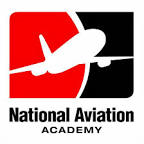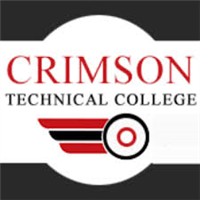What do they do?
Diagnose, adjust, repair, or overhaul aircraft engines and assemblies, such as hydraulic and pneumatic systems.
Also known as:
Aircraft Maintenance Technician (Aircraft Maintenance Tech), Aircraft Mechanic, Aircraft Restorer, Aircraft Technician, Airframe and Powerplant Mechanic (A and P Mechanic), Airframe and Powerplant Technician (A and P Tech), Airframe Mechanic, Aviation Maintenance Technician (AMT), Aviation Mechanic, Helicopter Mechanic
-
2.5%
Change
Ranks #45 in job growth rate310Job Openings
Ranks #14 in net job growth
Looking for colleges that offer a specific major? Use the College Match Tool to find your best-matched schools and discover your estimated Net Price!
- Some college, no degree (34%)
- High school diploma equivalent (28%)
- Associate's degree (24%)
- Bachelor's degree (9%)
- Less than high school diploma (4%)
- Master's degree (2%)
- Doctorate or Professional Degree (<1%)
People in this career often have these skills:
- Equipment Maintenance - Performing routine maintenance on equipment and determining when and what kind of maintenance is needed.
- Repairing - Repairing machines or systems using the needed tools.
- Operations Monitoring - Watching gauges, dials, or other indicators to make sure a machine is working properly.
- Troubleshooting - Determining causes of operating errors and deciding what to do about it.
- Critical Thinking - Using logic and reasoning to identify the strengths and weaknesses of alternative solutions, conclusions, or approaches to problems.
- Complex Problem Solving - Identifying complex problems and reviewing related information to develop and evaluate options and implement solutions.
- Quality Control Analysis - Conducting tests and inspections of products, services, or processes to evaluate quality or performance.
- Reading Comprehension - Understanding written sentences and paragraphs in work-related documents.
- Speaking - Talking to others to convey information effectively.
- Monitoring - Monitoring/Assessing performance of yourself, other individuals, or organizations to make improvements or take corrective action.
- Operation and Control - Controlling operations of equipment or systems.
People in this career often know a lot about:
- Mechanical - Knowledge of machines and tools, including their designs, uses, repair, and maintenance.
- English Language - Knowledge of the structure and content of the English language including the meaning and spelling of words, rules of composition, and grammar.
- Engineering and Technology - Knowledge of the practical application of engineering science and technology. This includes applying principles, techniques, procedures, and equipment to the design and production of various goods and services.
People in this career often have talent in:
- Written Comprehension - The ability to read and understand information and ideas presented in writing.
- Problem Sensitivity - The ability to tell when something is wrong or is likely to go wrong. It does not involve solving the problem, only recognizing that there is a problem.
- Information Ordering - The ability to arrange things or actions in a certain order or pattern according to a specific rule or set of rules (e.g., patterns of numbers, letters, words, pictures, mathematical operations).
- Finger Dexterity - The ability to make precisely coordinated movements of the fingers of one or both hands to grasp, manipulate, or assemble very small objects.
- Control Precision - The ability to quickly and repeatedly adjust the controls of a machine or a vehicle to exact positions.
- Arm-Hand Steadiness - The ability to keep your hand and arm steady while moving your arm or while holding your arm and hand in one position.
- Manual Dexterity - The ability to quickly move your hand, your hand together with your arm, or your two hands to grasp, manipulate, or assemble objects.
- Near Vision - The ability to see details at close range (within a few feet of the observer).
- Deductive Reasoning - The ability to apply general rules to specific problems to produce answers that make sense.
- Inductive Reasoning - The ability to combine pieces of information to form general rules or conclusions (includes finding a relationship among seemingly unrelated events).
- Multilimb Coordination - The ability to coordinate two or more limbs (for example, two arms, two legs, or one leg and one arm) while sitting, standing, or lying down. It does not involve performing the activities while the whole body is in motion.
- Oral Expression - The ability to communicate information and ideas in speaking so others will understand.
- Oral Comprehension - The ability to listen to and understand information and ideas presented through spoken words and sentences.
- Written Expression - The ability to communicate information and ideas in writing so others will understand.
- Flexibility of Closure - The ability to identify or detect a known pattern (a figure, object, word, or sound) that is hidden in other distracting material.
People in this career often do these activities:
- Inspect mechanical components of vehicles to identify problems.
- Inspect completed work to ensure proper functioning.
- Read technical information needed to perform maintenance or repairs.
- Interpret blueprints, specifications, or diagrams to inform installation, development or operation activities.
- Maintain repair or maintenance records.
- Inspect structural components of vehicles to identify problems.
- Operate cranes, hoists, or other moving or lifting equipment.
- Test fluids to identify contamination or other problems.
- Repair worn, damaged, or defective mechanical parts.
- Replace worn, damaged, or defective mechanical parts.
- Disassemble equipment to inspect for deficiencies.
- Read work orders or descriptions of problems to determine repairs or modifications needed.
- Test mechanical equipment to ensure proper functioning.
- Inspect mechanical equipment to locate damage, defects, or wear.
- Apply protective coverings to objects or surfaces near work areas.
- Move large objects using heavy equipment.
- Assemble electrical components, subsystems, or systems.
- Install electrical components, equipment, or systems.
- Install piping for installation or maintenance activities.
- Lay out work according to specifications.
- Fabricate parts or components.
- Reassemble equipment after repair.
- Clean equipment, parts, or tools to repair or maintain them in good working order.
- Lubricate equipment to allow proper functioning.
- Service vehicles to maintain functionality.
- Operate heating or drying equipment.
- Cut materials according to specifications or needs.
- Observe equipment in operation to detect potential problems.
- Troubleshoot equipment or systems operation problems.
- Remove parts or components from equipment.
- Drill holes in parts, equipment, or materials.
- Install machine or equipment replacement parts.
- Align equipment or machinery.
- Maintain inventories of materials, equipment, or products.
- Order materials, supplies, or equipment.
- Determine operational criteria or specifications.
- Communicate with coworkers to coordinate installations or repairs.
- Paint surfaces or equipment.
This page includes data from:

 Occupation statistics: USDOL U.S. Bureau of Labor Statistics Occupational Employment Statistics
Occupation statistics: USDOL U.S. Bureau of Labor Statistics Occupational Employment Statistics
 Videos: CareerOneStop, USDOL/ETA and the Minnesota Department of Employment & Economic Development
Videos: CareerOneStop, USDOL/ETA and the Minnesota Department of Employment & Economic Development






























